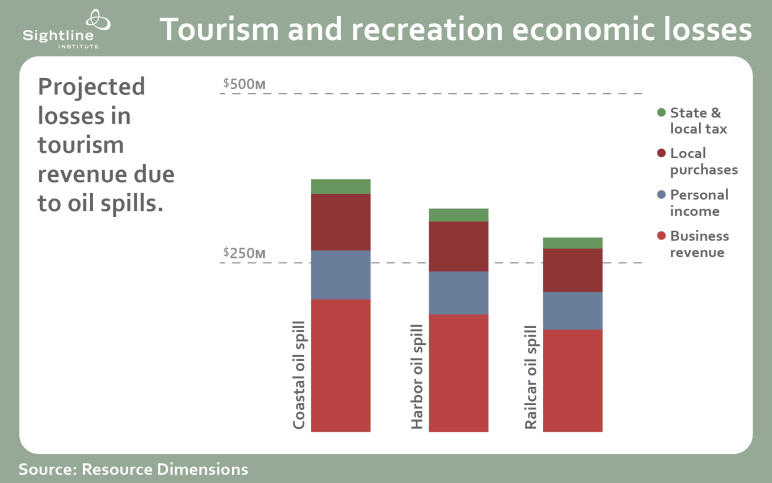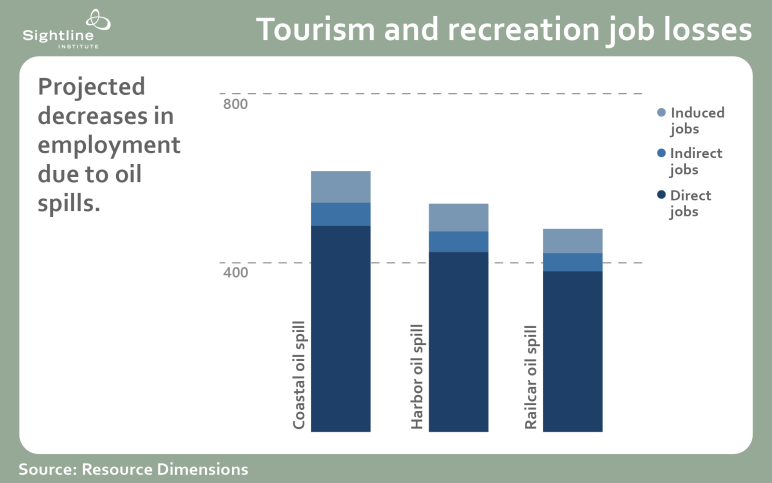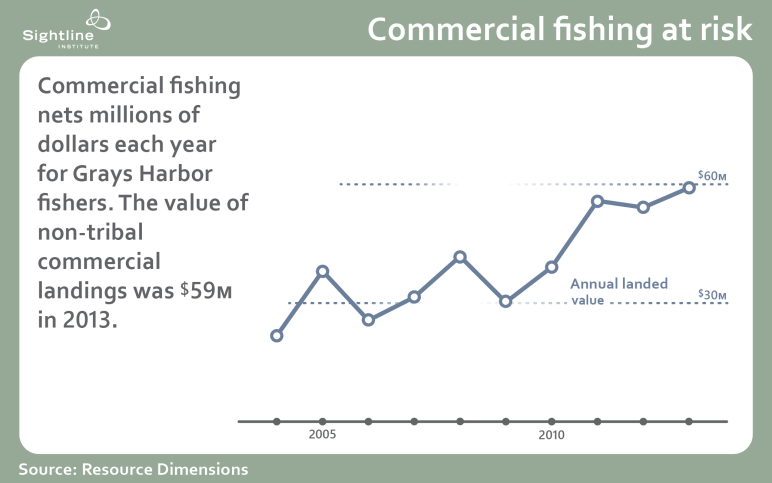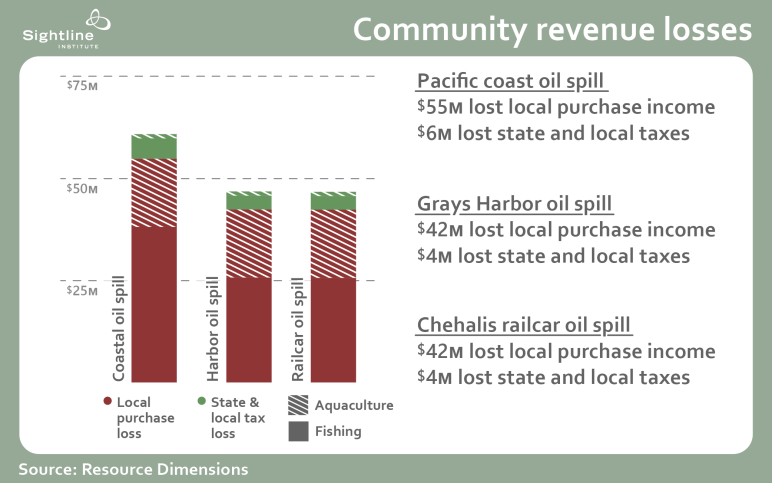Grays Harbor has seen an oil spill before—one that took over sixteen years to clean up. Although Grays Harbor is still unprepared to address the waste, wildlife impacts, and financial costs of an oil spill, three large oil terminals have been proposed for the bay.
Sightline recently summarized a pair of reports on the economic threats that these projects pose to coastal tourism and the Quinault Indian Nation. Now, a new report by economic consulting firm Resource Dimensions provides an in-depth analysis of the threat to Grays Harbor’s tourism and non-tribal commercial fishing. Here we present the report’s top findings.

Resource Dimensions studied three oil spill scenarios—an oil-by-rail spill into the Chehalis River and marine vessel spills inside and off the entrance to Grays Harbor—and found that they would harm a range of economic interests, including tourism, commercial fishing and aquaculture, and sport fishing.

Over one-third of Washington coastal recreation trips are to Grays Harbor, and nearly a quarter of the region’s workforce is employed in jobs that support the tourism industry.

An oil spill at Grays Harbor could result in tourism revenue losses of $290 million to $370 million.

The workforce that supports tourism and recreation at Grays Harbor could decrease by 480 to 620 jobs in the event of an oil spill.

Recreational clam digging is just one popular coastal recreation activity at risk from increased oil transportation at Grays Harbor.

The average annual value of non-tribal landings in Grays Harbor was $40 million per year from 2004 to 2013, and the value has increased steadily since 2009.

Commercial fishing and aquaculture generate over $277 million in business revenues and support 1,215 regional jobs. At least 30 percent of business revenue and jobs would be at risk in the event of an oil spill.

Local purchases and tax revenue from commercial fishing and aquaculture are projected to decrease by at least $46 million in the event of an oil spill.

In addition to losses related to an oil spill, the day-to-day activities of oil transportation will negatively affect commercial and sport fishing by reducing fishing opportunities overall. An average annual landing value of $39 million combined with annual sport fishing revenues of $5 million nets $44 million in revenue.

Any of the three oil spill scenarios studied would mean at least three years of reduced revenues and could impact the environment for even longer.
Thanks to Devin Porter at Goodmeasures.biz, who designed these graphics.


Comments are closed.